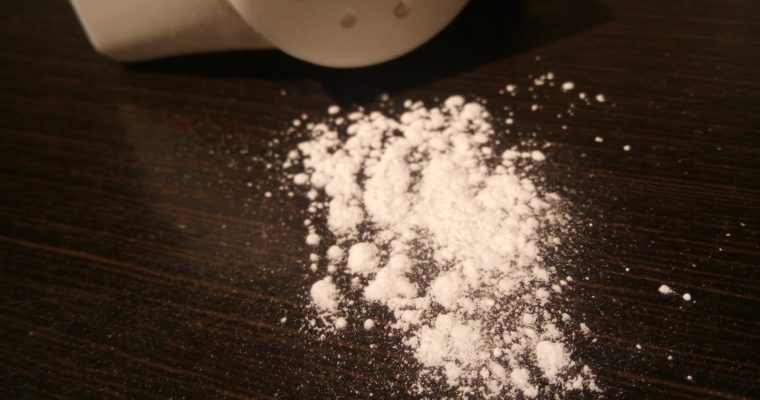What is it?
Talc is a naturally occurring mineral, found on the earth. Aka Hydrated Magnesium Silicate, (for you chemistry nerds).
Talc in cosmetics?
Talc is a wonderful ingredient with many functions in cosmetics. It gives a nice matte texture, absorbs moisture and can gives you a luscious skin after feel. You can find it in products like blushes, eye shadows, foundations. But most commonly baby powder. For its absorbing abilities of course.
So, what is the concern?
Since its natural, it is often found with asbestos (also a mineral). Yes, asbestos is a known carcinogen (cancer causing)! Things you don’t want to breathe in. Contamination is the biggest concern with Talc in cosmetic products.
But did you know? In cosmetic products they use cosmetic-grade talc. Meaning they are purified, tested and confirmed to be free of asbestos. You can find a list of talc that can be used in cosmetics. Look at the FDA site, it is a US site but gives you an indication.
Still a concern? Then contact the cosmetic company to ease your mind. The companies putting the product out in the market knows about this issue. They would have done their due diligence to make sure its asbestos free.
Talcum powder aka Baby powder
There was a case not long ago around May 2017 regarding Johnson & Johnson Baby powder. A woman was diagnosed with cancer after using their baby powder [1]. This was just one of the many cases regarding this matter.
Did you know? The use of baby powder has been extensively studied. Though you will find many inconclusive articles on talc and its cancer causing abilities. (Scroll down for more articles).
At the end of the day, if you can’t decide then don’t use it at all. There are plenty of talc replacements out there. You just need something to absorb the moisture.
For example;
- Corn/Tapioca/Rice starch
- Arrow root powder
- Kaolin
- Oat flour
Further reads if you’re up for it
“Further research is needed to determine whether and how talcum powder might increase the risk of ovarian cancer” – Australian Cancer Council
“Perineal use of talcum-based body powder is possible carcinogenic to humans” – International Agency for Research on Cancer
“Inhaled talcum not containing asbestos or asbestiform fibres is not classifiable as to its carcinogenicity (Group 3).” – International Agency for Research on Cancer
“Until more information is available, people concerned about using talcum powder may want to avoid or limit their use of consumer products that contain it.” – American Cancer Society
“We continue to use talcum in our products because decades of science have reaffirmed its safety. Because of its safety and effectiveness, we confidently include pharmaceutical grade talc in our products.” – Johnson & Johnson
“In summary, these data collectively do not indicate that cosmetic talc causes ovarian cancer.” – European Journal of Cancer Prevention
Note: I am only delivering the facts, I am neither for or against using talc or talc containing products.
Hope this review helps! Comment below on your thoughts on talc.
Read some interesting facts on ingredients that may be in your products!
